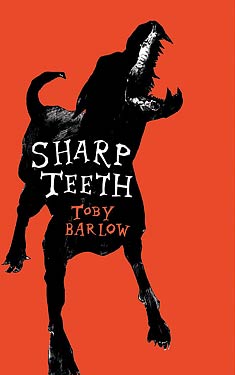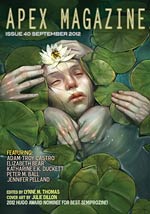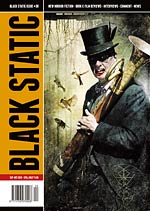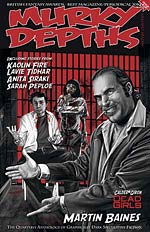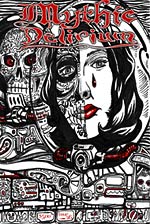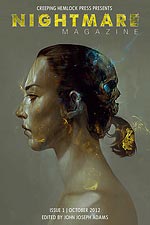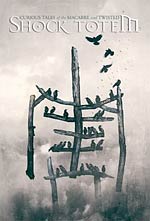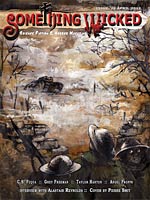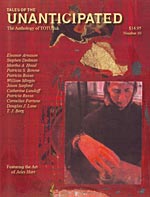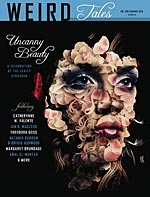Forays into Fantasy (and Horror): Bram Stoker’s Dracula and the Origin of the Vampire
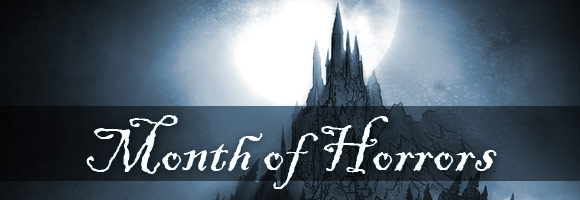
Scott Lazerus is a Professor of Economics at Western State Colorado University in Gunnison, Colorado, and has been a science fiction fan since the 1970s. The Forays into Fantasy series is an exploration of the various threads of fantastic literature that have led to the wide variety of fantasy found today, from the perspective of an SF fan newly exploring the fantasy landscape. FiF will examine some of the most interesting landmark books of the past, along with a few of today’s most acclaimed fantasies, building up an understanding of the connections between fantasy’s origins, its touchstones, and its many strands of influence.
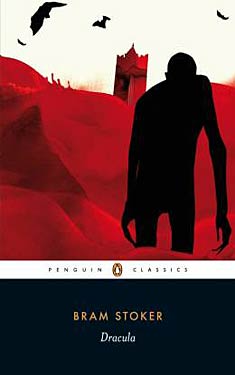 In Greek mythology, the Lamia was a Libyan queen who was transformed into an unclean child-eating demon. The story later became part of European folklore—a story told to frighten misbehaving children. In many versions, the Lamia became a serpentine monster who seductively lured men to their doom, in order to drink their blood. According to Brian Stableford in The Encylopedia of Fantasy, this legend, combined with “Eastern European superstitions regarding cannibalistically inclined reanimated corpses,” were the roots of the literary vampire, although the latter type of story seemed to be more closely related to the modern zombie.
In Greek mythology, the Lamia was a Libyan queen who was transformed into an unclean child-eating demon. The story later became part of European folklore—a story told to frighten misbehaving children. In many versions, the Lamia became a serpentine monster who seductively lured men to their doom, in order to drink their blood. According to Brian Stableford in The Encylopedia of Fantasy, this legend, combined with “Eastern European superstitions regarding cannibalistically inclined reanimated corpses,” were the roots of the literary vampire, although the latter type of story seemed to be more closely related to the modern zombie.
In 1819, John Polidori, formerly Lord Byron’s physician, took a fragmentary story of Byron’s and expanded it into The Vampyre: A Tale, whose vampire protagonist, Lord Ruthven, was seen from the time of the book’s publication to be a thinly disguised portrayal of Byron himself—a character that became the initial template for the modern vampire in horror fiction. Ruthven was “the satanic, world-weary aristocrat whose eyes have a hypnotic effect, especially upon women, and in whom vampirism and seduction are a part of the same process. The languor of the Byronic vampire is a pose, [however,] for his energy is infernal” (John Clute, also from The Encylopedia). See the blog post on Frankenstein’s Forefathers for more on the story of the intertwined origins of the two best-known monsters in horror fiction, involving Byron, Polidori, and Mary Shelley, during the summer of 1816.
Horror Books in Brief: Sharp Teeth, November Mourns, Lullaby and Mr. Shivers
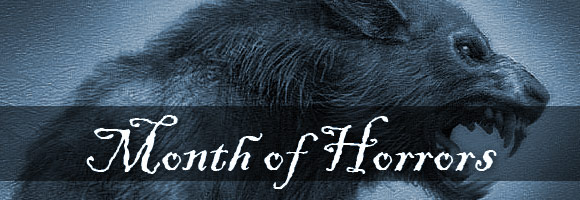
Guest Blogger and WWEnd Member, Charles Dee Mitchell, has contributed a great many book reviews to WWEnd including his blog series Philip K. Dickathon and The Horror! The Horror! He can also be found on his own blog www.potatoweather.blogspot.com.
Let’s see… What would be a really terrible idea for a book?
I’ve got it! How about a novel about werewolves written in blank verse?
But wait, Toby Barlow has already done that with Sharp Teeth, and everything about it is amazing and excellent.
This novel satisfies on so many levels. For those who have always suspected Los Angeles of harboring rival packs of lycanthropes, here is your proof. For those who treasure the thought that true love knows no bounds, including species — again, here is your proof. For those who like complex noirish thrillers about drug lords and shape shifters, let’s face it, it is not going to get any better than this.
I confess, I wasn’t giving Barlow’s novel credit for how complex his tale would be until I realized I needed to back up and figure out just who was who, what pack they ran with, where the bad blood came from, and why those two lycanthropes were playing in a bridge tournament in Pasadena. (When they realize the two sweet old ladies beating them are cheating, one places a phone call to sweet old lady number one and says, “Keep it up and I will chew the flesh off your fingers.” You gotta love these guys.)
But what’s up with the blank verse? Truth be told, after a few pages I couldn’t imagine the story written any other way. Barlow’s verse is straighforward and flourish-free, but if you try printing out some pages as prose you will see it’s not just Raymond Chandler with line breaks. One blurb compares Barlow to Ovid, and I did get the impression that I could be reading a free translation from an ancient writer that stayed true to the spirit of the original. And that original could be very funny, very brutal, and towards the end kind of sad.
Frankenstein’s Forefathers

We all know that Frankenstein’s monster was brought to life by powerful bolt of lightening. The image of him strapped to his iron bed as electricity courses through his body is an iconic Hollywood image. Never mind that such never transpired in Mary Shelley’s 1818 novel. For many of us, that is how he was born, whatever the book says. If, however, you were dismayed at the absence of such an origin the original Frankenstein, don’t be. The Creature may very well have been born from a thunderclap.
 It was the summer of 1816 when an eighteen-year-old Mary Shelley traveled with her husband, the incomparable Percy Blysshe Shelley, to Lake Geneva, where they rented a house adjacent to their friend, Lord Byron. The three of them were joined by Byron’s personal nurse (and likely lover), John Polidori. This was the Year of No Summer, when the Mt. Tambora eruption (the most powerful in recorded history) released so much ash into the atmosphere that temperatures plummeted in many areas of the world. One of the hardest hit areas was Lake Geneva, where it “proved a wet, ungenial summer”, according to Mrs. Shelley, “and incessant rain often confined us for days to the house.” So, instead of spending their “pleasant hours on the lake, or wandering on its shores,” as they had done before Tambora’s ash blotted out the sun, they plunged themselves into (what else?) books:
It was the summer of 1816 when an eighteen-year-old Mary Shelley traveled with her husband, the incomparable Percy Blysshe Shelley, to Lake Geneva, where they rented a house adjacent to their friend, Lord Byron. The three of them were joined by Byron’s personal nurse (and likely lover), John Polidori. This was the Year of No Summer, when the Mt. Tambora eruption (the most powerful in recorded history) released so much ash into the atmosphere that temperatures plummeted in many areas of the world. One of the hardest hit areas was Lake Geneva, where it “proved a wet, ungenial summer”, according to Mrs. Shelley, “and incessant rain often confined us for days to the house.” So, instead of spending their “pleasant hours on the lake, or wandering on its shores,” as they had done before Tambora’s ash blotted out the sun, they plunged themselves into (what else?) books:
Some volumes of ghost stories, translated from the German into French, fell into our hands. There was the History of the Inconstant Lover, who, when he thought to clasp the bride to whom he had pledged his vows, found himself in the arms of the pale ghost of her whom he had deserted. There was the tale of the sinful founder of his race, whose miserable doom it was to bestow the kiss of death on all the younger sons of his fated house, just when they reached the age of promise. His gigantic, shadowy form, clothed like the ghost in Hamlet, in complete armour, but with the beaver up, was seen at midnight, by the moon’s fitful beams, to advance slowly along the gloomy avenue. The shape was lost beneath the shadow of the castle walls; but soon a gate swung back, a step was heard, the door of the chamber opened, and he advanced to the couch of the blooming youths, cradled in healthy sleep. Eternal sorrow sat upon his face as he bent down and kissed the forehead of the boys, who from that hour withered like flowers snapt upon the stalk. I have not seen these stories since then; but their incidents are as fresh in my mind as if I had read them yesterday.
These stories famously inspired the Geneva circle (Lord Byron, Polidori, and Percy and Mary Shelley) to write their own tales of woe. It was Byron’s idea. “We shall each write a ghost story,” he proclaimed. The game was afoot. It was due to that challenge that Lord Byron wrote a fragment of a story that started the vampire trope in Western literature. Polidori, according to Shelley, penned a god-awful story “about a skull-headed lady, who was so punished for peeping through a key-hole—what to see I forget—something very shocking and wrong.” Eventually, Polidori ditched this story in favor of Byron’s, writing his own novel, The Vampyre, based on Byron’s fragment. The great Percy Shelley also began a story (based on his own childhood), but, as with the other two, he quickly gave up. As Mary put it, “The illustrious poets also, annoyed by the platitude of prose, speedily relinquished the uncongenial task.”
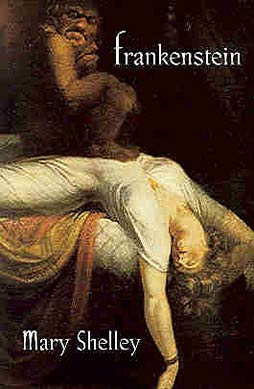 We all know who must have won Byron’s challenge. Mary Shelley was the only one to actually complete her “ghost story,” Frankenstein. It was unlike any ghost story ever written, however, because, instead of a bodiless soul, this “ghost,” was a reanimated body. Mrs. Shelley had turned the ghost story on its ear.
We all know who must have won Byron’s challenge. Mary Shelley was the only one to actually complete her “ghost story,” Frankenstein. It was unlike any ghost story ever written, however, because, instead of a bodiless soul, this “ghost,” was a reanimated body. Mrs. Shelley had turned the ghost story on its ear.
The Geneva Wager is a story you may have heard before. I remember hearing it when I first read Frankenstein as a teenager. It is, after all, where two monumental icons of 19th century horror originated. They are especially important icons for this time of year: Frankenstein’s monster and vampires are as essential to Hallowe’en as trick or treating. Yet one aspect of the story always eluded me: What were those stories that so captured the imagination of the Geneva circle that it would inspire monsters as enduring as the Creature and the Undead?
All I had to go on was Mary’s description, “Some volumes of ghost stories, translated from the German into French,” and a footnote describing the French title as Fantasmagoria. Even if I could find that tome, I don’t speak French! What is a linguistically impaired nerd to do? Eventually, of course, the Interwebs provided. It turns out Internet Archive (a rockin’ site that documents everything on the web and many things off it) has as a wonderful PDF scan of an 1813 edition, called Tales of the Dead. In it, you will find the two stories that Mary Shelley described. “The Death-Bride” (which she describes as “the History of the Inconstant Lover,” and “The Family Portraits,” (which she described in greatest detail) are particularly eerie tales that might keep you up at night, especially if you have a guilty conscience.
It, by Stephen King
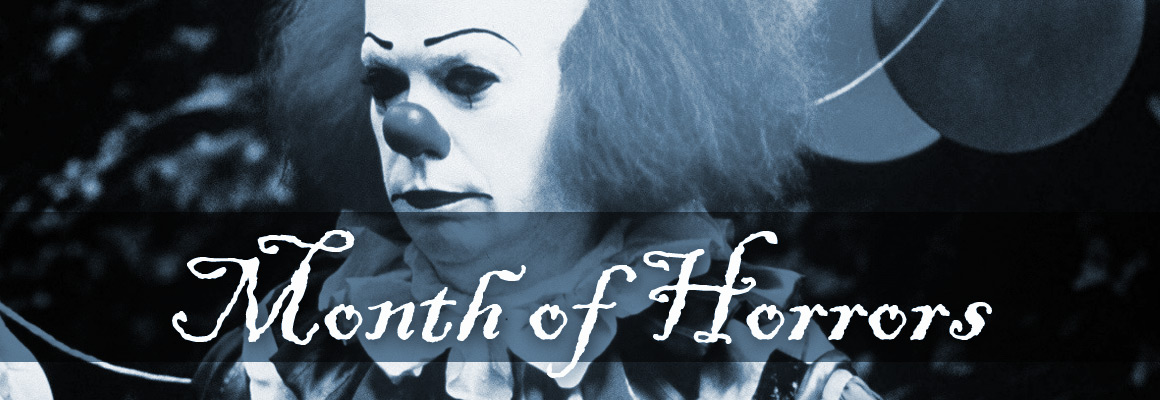
It’s always interesting to look at the stats on the WWEnd site, to see where visitors come from, what pages they like, how long they stay, and which areas are most popular. As it turns out, the most popular page on WorldsWithoutEnd.com is the novel page for It. While It is obviously a well-read novel—87 members have marked it as read, and 53 have rated it—the book remains unreviewed on our site. I thought that odd, and decided to make it a project for this year’s Month of Horrors to read and review Stephen King’s popular book. At 1090 pages, this was a daunting task, but King’s prose is rarely difficult to read, even if his subject matter is often repulsive, and I managed to complete it in about two weeks. After finishing this brick of a book, I think I have a better sense of why it’s as well loved as it is. That doesn’t mean I particularly love it, myself, but I think it might be constructive to explore why I do not. (Some revealing spoilers ahead, be warned.)
Carrie Trailer
I’ve never seen the original film, although I read the novel a few years back. Not my favorite King book, but I’d say that Chloë Moretz is the kind of actress who could pull this off, if anyone can.
Nightmare Magazine’s Top 100 Horror Books
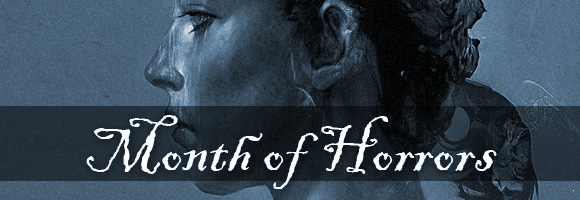
One of the things we really wanted to do for Month of Horrors was expand our selection of Horror novels on the site. Last year we added the Bram Stoker Award and the Horror Writers Association Reading List, and at the top of this month we added the Shirley Jackson Award. All great additions, of course, but we found ourselves wanting more. Our Horror selection is still dwarfed by Science Fiction and Fantasy, so we thought it would be great to add a new Horror-based reading list. Unfortunately, none of us running the show at WWEnd are experts in Horror, so any list we could have created would be a wild guess at best, or a hilarious mess at worst.
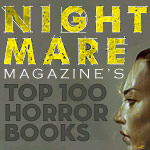 So we decided to consult the experts at Nightmare Magazine, instead.
So we decided to consult the experts at Nightmare Magazine, instead.
What we got back was a list of Nightmare Magazine’s Top 100 Horror Books, spanning everything from late gothic to splatterpunk, from killer clowns to devil babies, from vampire romance to vampire apocalypse. It’s like a synecdoche of the entire genre through it’s entire history, and we like to think it has a little something for everyone. Our thanks to Nightmare publishers John Joseph Adams and R. J. Sevin especially for creating this great list!
(Please note that many of the anthologies are included in the list in their entirety, not just as their first volumes. We will be adding the rest of the volumes to the WWEnd database over the next few days.)
Peruse the new list to see if there’s anything you want to add to your reading list. Remember, your Horror reviews posted on WWEnd throughout October will be considered for publication in the blog for the Month of Horrors.
The Owl Killers, by Karen Maitland
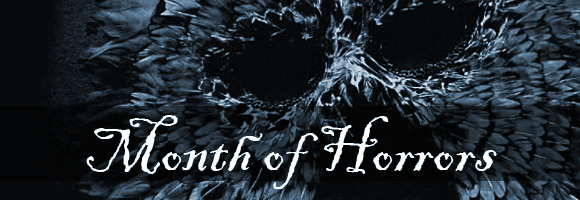
Today’s Month of Horrors review is from blogger and WWEnd member Valashain. This review originally appeared on his blog Val’s Random Comments, where he regularly reviews science fiction and fantasy books. The Owl Killers was a 2009 nominee for The Shirley Jackson Award.
The medieval period in Europe serves as an inspiration to many a fantasy novel. Apparently there is something very appealing to imagining oneself living in such an environment, so much so that our perception of the period has become more than a bit romanticized. In sharp contrast, history books tell us just how miserable and brutal life could be for a large part of the population. Historical fiction does not entirely escape the romanticizing of this period but quite a few novels attempt to paint a more realistic picture. Like Maitland’s previous book Company of Liars, The Owl Killers does not shy away form the harshness of life. Hunger, disease, natural disasters, oppressive taxation and unbridled religious madness, very little is spared the 14th century village the book depicts. It makes The Owl Killers in a very dark book. Fear is a main ingredient and the author makes sure the reader knows it.
Horror Magazines
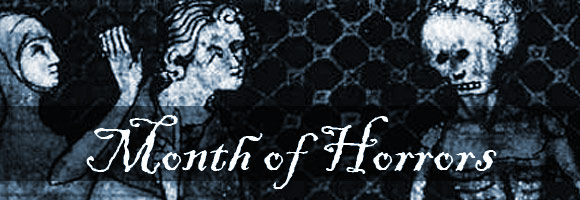
I’ve been hearing for years that genre magazines are going the way of the Dodo. From where I’m standing, it looks like a pretty healthy market. On our Magazines page we have listed over 70 genre magazines for you to choose from and we keep finding more new ones to add all the time.
For our Month of Horrors I wanted to point out some of the Horror magazines from out list. If you’re looking for something creepy and scary these magazines will get the job done. Check ’em out and if you find something you like show your support by subscribing!
Apex Magazine
Apex Publications started as a tingle in the mind of Jason Sizemore during the month of November in the year 2004. Having been a fan of the small press scene for several years, he noticed a lack of a certain type of fiction: Science-Horror.
Black Static
Black Static is a horror magazine that has earned much praise for its style, bravery, editorial and fiction content. Its stories are innovative and daring, never afraid to shock or disturb yet never forget to entertain.
Murky Depths
Murky Depths is a quarterly anthology with a difference. It features top quality speculative fiction with sprinklings of horror and fantasy that push the boundaries of science fiction. Each story is complimented with its own unique artwork.
Mythic Delirium
Mythic Delirium is a biannual journal that publishes science fiction, fantasy, horror, surreal and cross-genre poetry.
Nightmare Magazine
Nightmare is an online horror and dark fantasy magazine. In Nightmare’s pages, you will find all kinds of horror fiction, from zombie stories and haunted house tales, to visceral psychological horror. No subject is off-limits, and we will be encouraging our writers to take chances with their fiction and push the envelope.
Nightmare is brand new on the market – their first issue was released October 1st.
Shock Totem
Shock Totem is a bi-annual dark fantasy and horror publication. Our first issue was published in July of 2009. We focus on the one thing that matters most: the story. Back to basics. Each issue features fiction that we, as readers, enjoy. Within our pages, new and established authors are equals.
Something Wicked
Something Wicked is a monthly online and electronic-download science fiction and horror magazine. Published monthly, we feature some of the best new voices in horror and science fiction from around the world.
Tales of the Unanticipated
Tales of the Unanticipated is a journal of speculative fiction, fantasy, horror, and stories that you just wouldn’t anticipate. Tales of the Unanticipated is currently published annually.
Weird Tales
Weird Tales was launched to showcase writers trying to publish stories so bizarre and far out, no one else would publish them — stories of unearthly dimensions and dark possibilities, gothic seductresses and cosmic monstrosities.
20th Century Ghosts, by Joe Hill
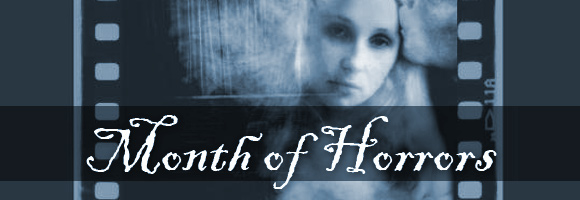
Joe Hill is, I think, a much better writer and storyteller than his father, Stephen King. While I enjoyed his novel Heart-Shaped Box, his earlier collection of short stories has a special kind of charm. Like any volume of short stories, 20th Century Ghosts has its hits and its misses, but even the imperfect tales are far more interesting than you would have any reason to expect. The book was published a few years before Hill was “outed” as Stephen King’s son, and while it’s not entirely fair to compare any artist to his close relations, it’s quite impossible to avoid. But as I said, I believe Hill comes out as the winner in the comparison. I have yet to read his second novel Horns, but I have little doubt it will be worthwhile.
Not every story found within is a horrific or even a darkly fantastic story, and according to Christopher Golden’s introduction some of them were written for literary magazines (a term Golden somehow finds despicable). But if the horror tales are not overly concerned with terror and fright to the exclusion of literary art, the literary tales have plenty of horror of their own.
The Shirley Jackson Award
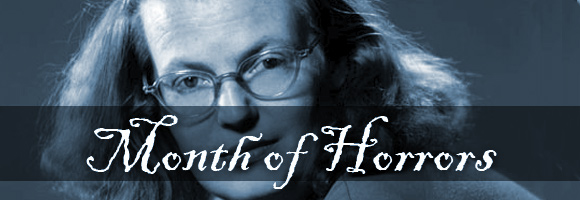
Just in time to kick of the Month of Horrors, we have added the Shirley Jackson Award to our awards list! We’re always on the lookout for ways to expand our book collection, and since Horror is the most recent genre addition to the site, our selection for it has been on the sparse side. Here’s how the Award runners describe themselves:
In recognition of the legacy of Shirley Jackson’s writing, and with permission of the author’s estate, the Shirley Jackson Awards have been established for outstanding achievement in the literature of psychological suspense, horror, and the dark fantastic.
Shirley Jackson (1916-1965) wrote such classic novels as The Haunting of Hill House and We Have Always Lived in the Castle, as well as one of the most famous short stories in the English language, “The Lottery.” Her work continues to be a major influence on writers of every kind of fiction, from the most traditional genre offerings to the most innovative literary work. National Book Critics Circle Award-winning novelist Jonathan Lethem has called Jackson “one of this century’s most luminous and strange American writers,” and multiple generations of authors would agree.
Go take a look at their site, and of course at our new award page.



















 Full Details
Full Details
